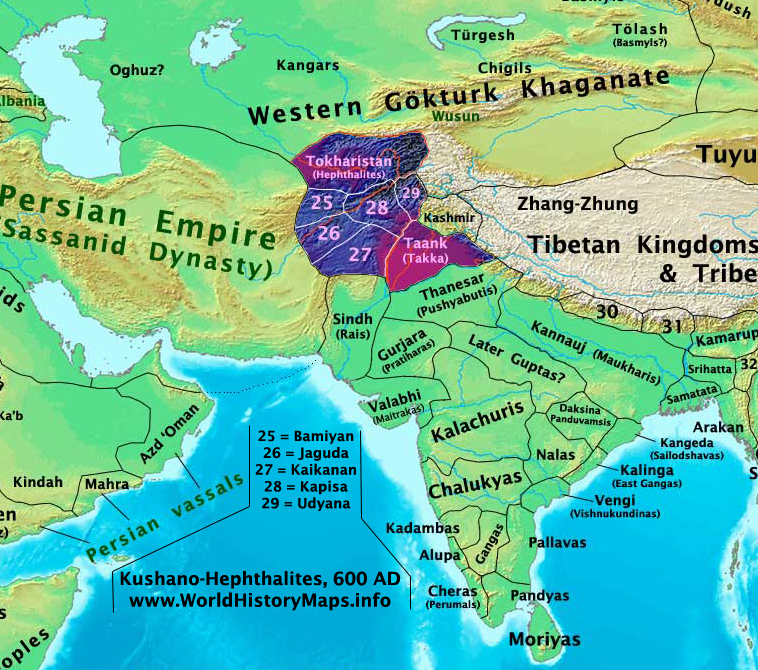https://www.worldhistorymaps.info/wp-content/uploads/2021/03/kushano-hephthalites_600ad.jpg
The Sasanian (/səˈsɑːniən, səˈseɪniən/) or Sassanid Empire, officially known as the Empire of Iranians (Middle Persian: 𐭠𐭩𐭥𐭠𐭭𐭱𐭲𐭥𐭩 Ērānshahr),[a] and called the Neo-Persian Empire by historians, was the last Persian imperial dynasty before the Muslim conquest in the mid seventh century AD. Named after the House of Sasan, it endured for over four centuries, from 224 to 651 AD, making it the longest-lived Persian dynasty. The Sasanian Empire succeeded the Parthian Empire, and reestablished the Iranians as a superpower in late antiquity, alongside its neighbouring arch-rival, the Roman-Byzantine Empire.
The Sasanian Empire was founded by Ardashir I, a local Iranian ruler who rose to power as Parthia weakened from internal strife and wars with Rome. After defeating the last Parthian shahanshah, Artabanus IV, in the battle of Hormozdgan in 224, he established the Sasanian dynasty and set out to restore the legacy of the Achaemenid Empire by expanding Iran’s dominions. At its greatest extent, the Sasanian Empire encompassed all of present-day Iran and Iraq and stretched from the eastern Mediterranean (including Anatolia and Egypt) to Pakistan, and from parts of southern Arabia to the Caucasus and Central Asia. According to legend, the vexilloid of the Empire was the Derafsh Kaviani.
The period of Sasanian rule is considered a high point in Iranian history, and in many ways was the peak of ancient Iranian culture before the Muslim conquest and subsequent Islamisation. The Sasanians tolerated the varied faiths and cultures of their subjects; developed a complex, centralised government bureaucracy; revitalized Zoroastrianism as a legitimising and unifying force of their rule; built grand monuments and public works; and patronised cultural and educational institutions. The empire’s cultural influence extended far beyond its territorial borders—including Western Europe, Africa, China and India—and helped shape European and Asian medieval art. Persian culture became the basis for much of Islamic culture, influencing art, architecture, music, literature, and philosophy throughout the Muslim world.
Source: Wikipedia

